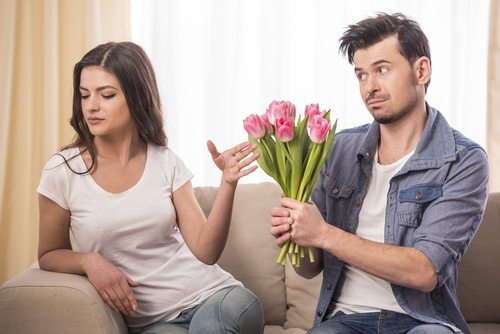Valentine's Day is a celebration of love and affection, and one of the most enduring traditions associated with this holiday is the exchange of flowers. Whether it's a single red rose or a lavish bouquet, Valentine's Day flowers hold a special significance that goes beyond their beauty. In this blog, we'll explore the psychology behind giving and receiving flowers on Valentine's Day and the profound emotional impact they can have on both the giver and the recipient.
The Power of Symbolism
Flowers have long been associated with deep emotional symbolism, with each type and colour carrying its own meaning. Red roses, for example, are synonymous with love and passion, making them the quintessential Valentine's Day flower. But beyond their literal representation, flowers also hold a symbolic value that can convey a wide range of emotions, from friendship and admiration to gratitude and sympathy. By selecting the right flowers, givers can communicate their feelings in a way that transcends words.
The Gift of Thoughtfulness
One of the most significant psychological benefits of giving Valentine's Day flowers is the act of thoughtfulness it represents. The time and effort put into selecting the perfect bouquet for a loved one convey a sense of care and consideration that can strengthen the bond between individuals. In a world filled with digital communication and material possessions, the simple act of giving flowers serves as a tangible reminder of the value of human connection and the importance of expressing love and appreciation.
The Joy of Receiving
On the receiving end, Valentine's Day flowers can evoke a wide range of positive emotions, from happiness and surprise to gratitude and affection. The act of receiving flowers triggers the release of dopamine, a neurotransmitter associated with pleasure and reward, which can create a sense of euphoria and excitement. Additionally, flowers have been shown to have a calming effect on the mind, reducing stress and anxiety and promoting feelings of well-being and contentment. Whether received from a romantic partner, friend, or family member, Valentine's Day flowers serve as a physical manifestation of love and thoughtfulness that can brighten anyone's day.
The Symbolism of Colour
The colour of Valentine's Day flowers also plays a significant role in their emotional impact. Red, the colour of passion and desire, is the most common choice for romantic gestures, while pink conveys feelings of sweetness and affection. White symbolises purity and innocence, making it a popular choice for new beginnings and expressions of sympathy. By choosing flowers in the appropriate colour, givers can further enhance the emotional message they wish to convey, creating a more meaningful and memorable gift.
The Continuation of Tradition
Finally, the act of giving and receiving Valentine's Day flowers is steeped in tradition, with roots dating back centuries. This sense of continuity and connection to the past adds depth and significance to the exchange, reinforcing the importance of love and romance in human culture. By participating in this time-honoured tradition, individuals not only express their own emotions but also contribute to the collective experience of Valentine's Day, creating a shared sense of joy and celebration.
In conclusion, the exchange of Valentine's Day flowers is far more than a mere gesture – it's a profound expression of love, thoughtfulness, and connection that transcends words. By understanding the psychology behind giving and receiving flowers, we can appreciate the emotional impact they have on both the giver and the recipient and the role they play in strengthening relationships and fostering feelings of love and affection. So this Valentine's Day, consider the power of flowers to convey your deepest emotions and make someone's day a little brighter. Happy Valentine's Day!
















